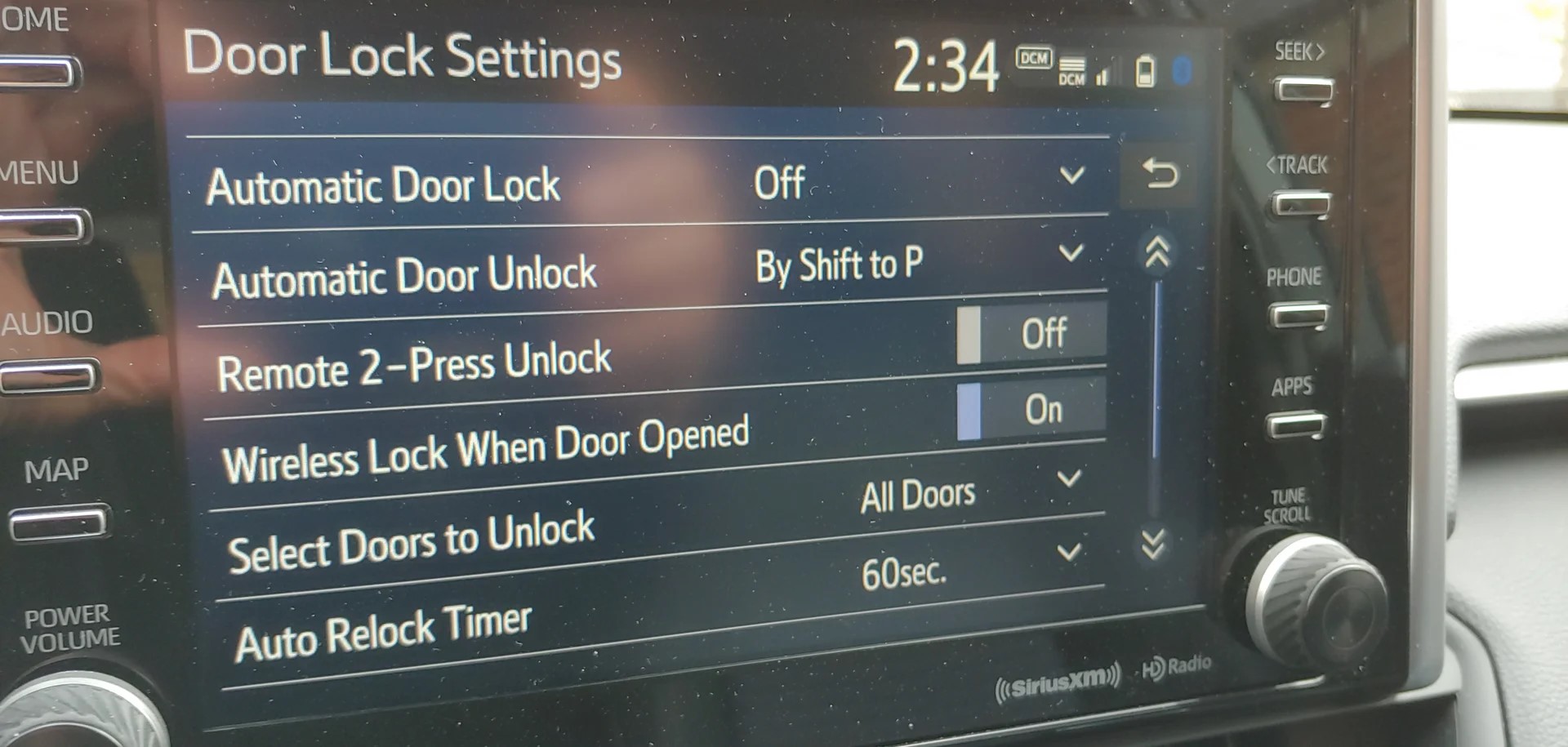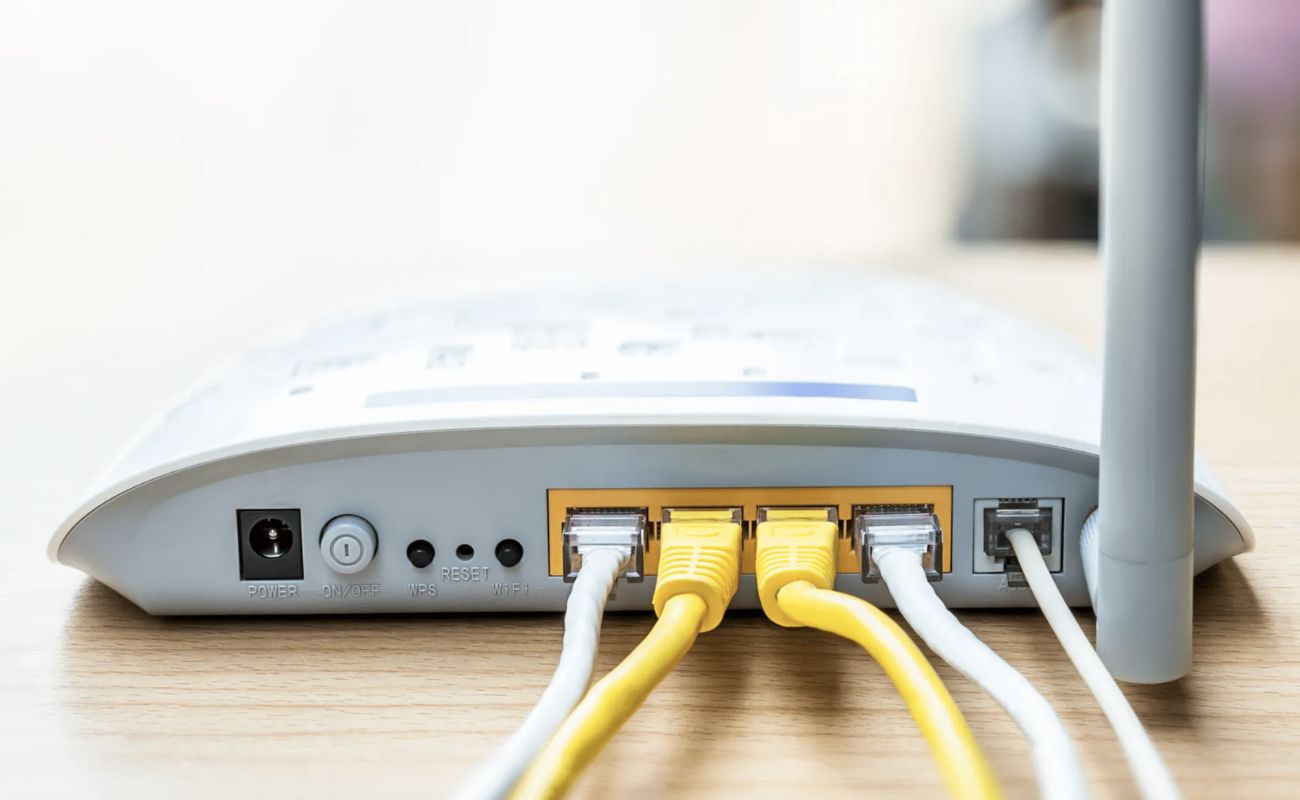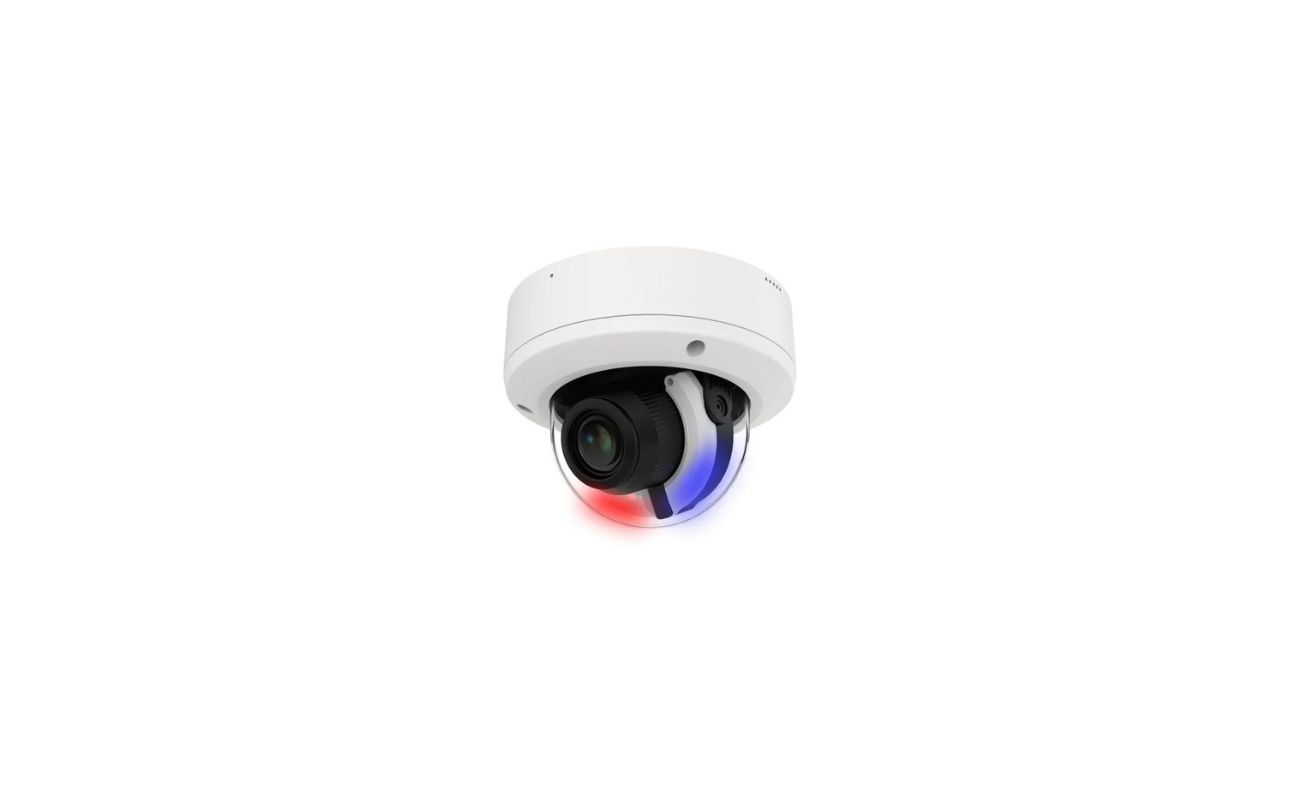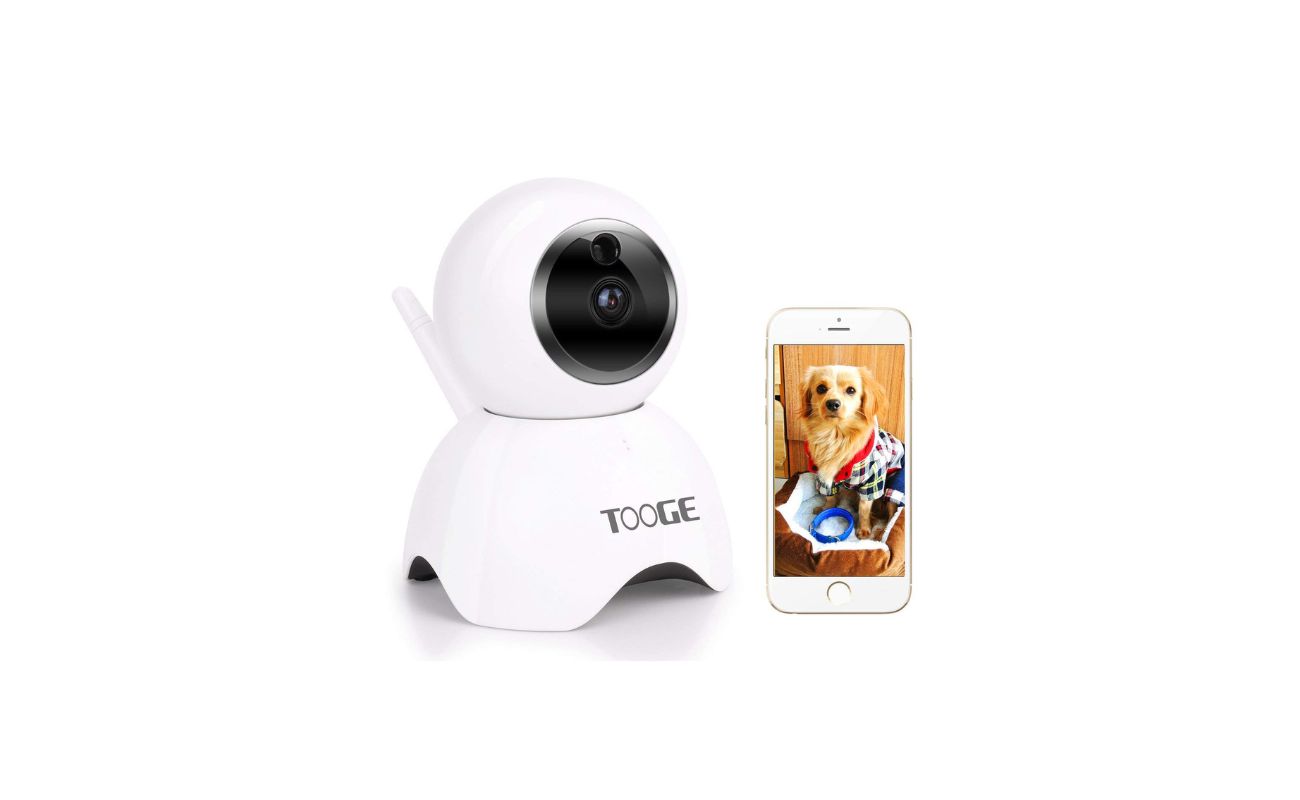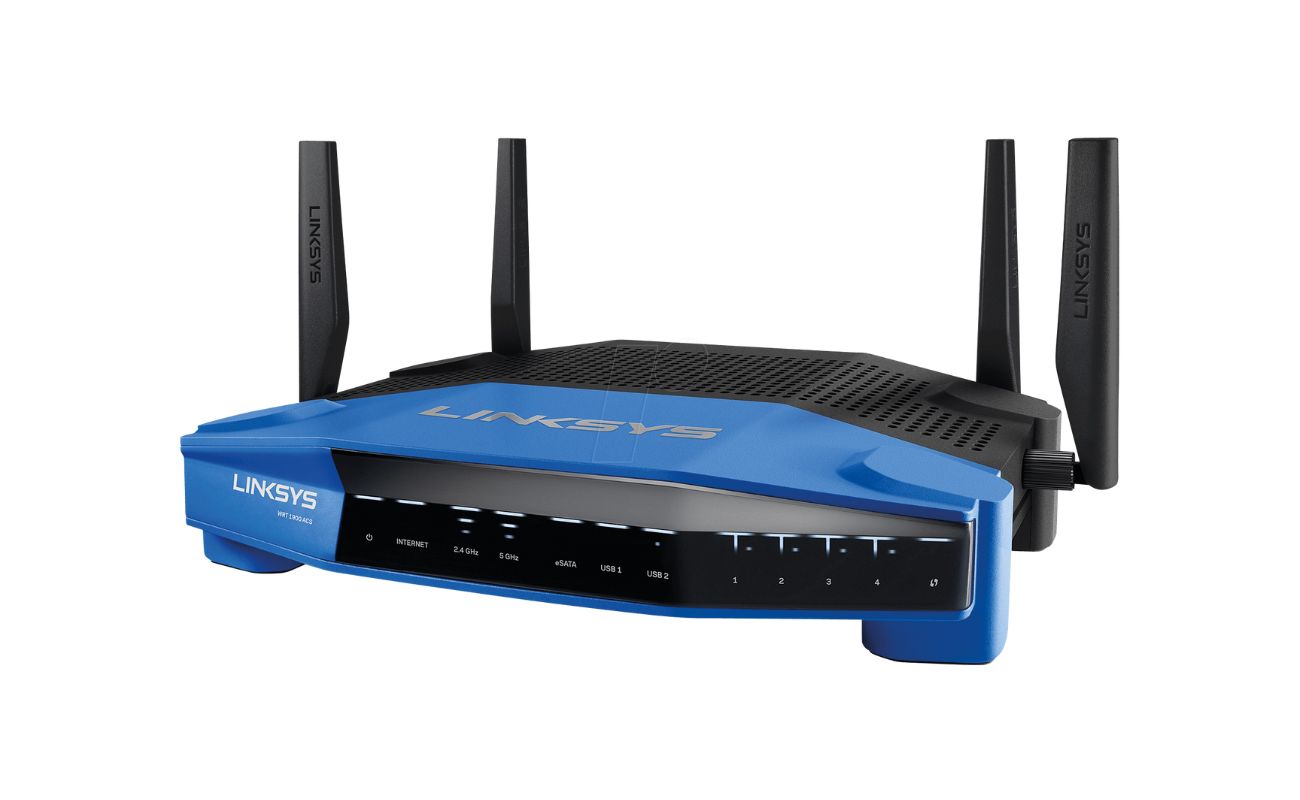Home>Home Security and Surveillance>Wireless Security That Sounds When Someone Touches A Window Or Door With Ultrasonic Waves


Home Security and Surveillance
Wireless Security That Sounds When Someone Touches A Window Or Door With Ultrasonic Waves
Modified: March 6, 2024
Be alerted instantly with our wireless home security and surveillance system that uses ultrasonic waves to detect any movement on your windows or doors. Stay protected and secure your home with our advanced technology.
(Many of the links in this article redirect to a specific reviewed product. Your purchase of these products through affiliate links helps to generate commission for Storables.com, at no extra cost. Learn more)
Introduction
Welcome to the world of wireless security systems that go beyond the conventional methods of protection. In today’s article, we will explore how the use of ultrasonic waves revolutionizes home security by sounding an alarm when someone touches a window or door.
Traditional security systems rely on sensors that trigger an alarm when an intruder opens a door or breaks a window. While effective in many cases, these systems have limitations. What if the intruder finds a way to enter the premises without triggering the alarm? That’s where ultrasonic wave technology comes into play.
Ultrasonic waves are sound waves with frequencies higher than the audible range for humans. They have a variety of applications, from medical imaging to distance measurement. In the realm of home security, ultrasonic waves act as a proactive sensor, detecting movement before a potential break-in occurs.
By using ultrasonic waves in a wireless security system, homeowners can significantly enhance the protection of their property and loved ones. The system detects any intrusion attempt by sensing changes in the reflection of the ultrasonic waves caused by movement near windows or doors. When an unauthorized person touches a window or door, the system immediately triggers an alarm, alerting the homeowner and deterring the intruder.
Now that we understand the basic concept of how ultrasonic waves can enhance home security, let’s delve deeper into the inner workings of these systems and explore the installation process.
Key Takeaways:
- Ultrasonic waves in wireless security systems detect movements near windows and doors, providing proactive protection and immediate alerts, enhancing home security and peace of mind.
- Future innovations in ultrasonic wireless security systems will bring smarter, more efficient, and comprehensive solutions, ensuring reliable protection for homes and loved ones.
How Ultrasonic Waves Work
Ultrasonic waves operate on the principle of sound waves. They are mechanical waves that propagate through a medium, such as air or water. These waves have frequencies higher than the upper limit of human hearing, typically above 20 kHz.
In a wireless security system, ultrasonic waves are emitted by a transmitter device and detected by a receiver. The transmitter emits a continuous wave of ultrasonic sound, while the receiver analyzes the reflected sound waves for any changes or disruptions.
When an object, such as a person or an animal, comes into the range of the ultrasonic waves, it interacts with the sound waves and causes a disturbance in their pattern. This disturbance alters the frequency and amplitude of the reflected waves received by the receiver.
The receiver measures these changes and uses sophisticated algorithms to analyze the data. It distinguishes between normal movement, like the rustling of leaves or the movement of a curtain, and potential intrusion attempts. When an unauthorized individual touches a window or door, the receiver detects the disturbance in the reflected sound waves and triggers an alarm.
The key advantage of using ultrasonic waves for security is that they are highly sensitive to small disturbances. This sensitivity makes them effective in detecting even the slightest movements near windows or doors, providing an added layer of protection.
Additionally, ultrasonic waves can penetrate most materials, including glass and plastic. This allows the security system to detect intrusions even if the perpetrator tries to bypass the system by tampering with or breaking a window or door. The system will instantly perceive the change in the reflected sound waves and respond accordingly.
It’s important to note that ultrasonic waves are harmless to humans and pets. The frequencies used in wireless security systems are specifically chosen to prevent interference with normal hearing. Therefore, homeowners can enjoy the benefits of this technology without any health risks.
Now that we understand how ultrasonic waves work, let’s explore the basics of wireless security systems and how they can be integrated with this technology.
Wireless Security System Basics
Before we delve into the integration of ultrasonic waves into a wireless security system, it’s important to have a basic understanding of how these systems function and the components they consist of.
A wireless security system is a network of devices that work together to protect a property from unauthorized access. Unlike traditional wired security systems, which require extensive wiring and installation, wireless systems are easy to set up and offer greater flexibility in terms of device placement.
The core components of a wireless security system typically include:
- Control Panel: The control panel serves as the central hub of the security system. It is responsible for coordinating the communication between different devices, such as sensors, cameras, and alarms.
- Wireless Sensors: Sensors are strategically placed throughout the property to detect any suspicious activity. These sensors can include door/window sensors, motion detectors, and glass break sensors.
- Cameras: Surveillance cameras are an integral part of any security system. They provide visual evidence of any intrusions and act as a deterrent to potential criminals. Wireless security systems offer the flexibility of placing cameras at various locations without the limitations of wiring.
- Alarms and Alerts: When an intrusion is detected, wireless security systems can sound alarms, send alerts to the homeowner’s mobile device, or even notify a monitoring service for immediate response.
- Mobile Application: Many wireless security systems offer mobile applications that allow homeowners to remotely monitor their property, receive notifications, and control the system using their smartphones or tablets.
These components work together seamlessly to create a comprehensive security network that keeps homeowners informed and protected.
Now that we have a solid understanding of the basics of wireless security systems, let’s explore how ultrasonic waves can be integrated into these systems to enhance their effectiveness.
Integrating Ultrasonic Waves into the Security System
Integrating ultrasonic waves into a wireless security system involves incorporating ultrasonic transmitters and receivers into the existing setup. These devices work in tandem to detect any movements near windows or doors and trigger an alarm when an intrusion attempt is detected.
The ultrasonic transmitter emits a continuous wave of ultrasonic sound, covering a specific area around the windows or doors. This area is known as the detection range. The receiver analyzes the reflected sound waves and detects any changes or disruptions in the pattern.
When an unauthorized individual touches or comes into close proximity to a window or door, the receiver detects the disturbance in the reflected sound waves. It then sends a signal to the control panel, which activates the alarm and alerts the homeowner of the potential intrusion.
One of the key benefits of integrating ultrasonic waves into a wireless security system is the ability to cover a larger area with fewer devices. Since ultrasonic waves can penetrate most materials, one transmitter and receiver pair can monitor multiple windows or doors within its detection range.
Moreover, the system can be customized to adjust the sensitivity of the ultrasonic waves. This ensures that normal movements, such as the swaying of curtains or the movement of objects near windows or doors, do not trigger false alarms. The sensitivity can be fine-tuned to detect only significant disturbances, such as someone touching or attempting to open a window or door.
The integration of ultrasonic waves into wireless security systems provides homeowners with a proactive approach to intrusion detection. By detecting movements before a potential break-in occurs, these systems act as a powerful deterrent and enhance the overall security of the property.
Now that we understand how ultrasonic waves can be integrated into a wireless security system, let’s explore the installation process and how to set up the detection range for optimal performance.
Installation Process
The installation process for integrating ultrasonic waves into a wireless security system is relatively straightforward. However, it’s important to follow the manufacturer’s instructions and guidelines for your specific system to ensure proper installation and optimal performance.
Here are the general steps involved in the installation process:
- Placement of Transmitters and Receivers: Determine the areas around the windows or doors that you want to monitor using ultrasonic waves. Install the transmitters and receivers in these locations.
- Power Connection: Connect the transmitters and receivers to a power source. Most wireless security systems utilize AC power adapters to provide a constant power supply.
- Pairing with the Control Panel: Follow the manufacturer’s instructions to pair the ultrasonic transmitter and receiver with the control panel of your wireless security system. This step may involve entering specific codes or utilizing a mobile app.
- Testing and Fine-tuning: Once the installation is complete, test the system to ensure that it is functioning properly. Walk around the detection range to confirm that the ultrasonic waves are detecting movement and triggering the alarm when necessary. Fine-tune the sensitivity settings if required to minimize false alarms.
- Additional Components: If desired, you can enhance your security system by adding other components like additional sensors, cameras, or alarms. Follow the manufacturer’s instructions for installing these additional devices and integrating them with the existing system.
It’s important to remember that every wireless security system may have its own unique installation process and requirements. Consulting the user manual provided by the manufacturer will provide you with specific guidelines.
By following proper installation procedures, you can ensure that your wireless security system, enhanced with ultrasonic waves, provides reliable protection to your home and loved ones.
Now that we have discussed the installation process, let’s move on to setting up the detection range for optimal performance.
Setting up the Detection Range
Setting up the detection range is a crucial step in ensuring the optimal performance of a wireless security system that utilizes ultrasonic waves. The detection range determines the area around the windows or doors where the system will detect movements and trigger an alarm.
To set up the detection range, follow these steps:
- Positioning the Transmitters: Carefully position the ultrasonic transmitters in strategic locations near the windows or doors you want to monitor. Consider placing them at a height that allows for comprehensive coverage and avoids obstructions.
- Testing the Coverage Area: Activate the system and walk through the area you want to cover. Observe the receiver’s response to ensure that it detects your movements consistently. Make adjustments to the positioning of the transmitters if needed to maximize coverage.
- Adjusting Detection Range: Most wireless security systems that incorporate ultrasonic waves allow you to adjust the detection range. This feature allows you to fine-tune the sensitivity of the system to your specific needs. Consult the user manual or the system’s mobile app to adjust the detection range settings.
- Testing Sensitivity: Once you have adjusted the detection range, test the sensitivity of the system by simulating various scenarios. For example, gently tap on windows or doors to see if the system detects the disturbance and triggers an alarm. Make further adjustments if necessary to minimize false alarms while ensuring optimal detection.
It’s important to note that the optimal detection range may vary depending on factors such as the size of the area being monitored, the proximity of neighboring properties, and the layout of your home. Taking the time to properly set up and adjust the detection range will ensure that your wireless security system effectively detects any potential intrusion attempts.
Now that we have covered the process of setting up the detection range, let’s explore the different alarm and alert mechanisms that can be used with a wireless security system.
Make sure to place the ultrasonic sensors at the right height and angle to cover the entire window or door. Test the system regularly to ensure it’s working properly.
Alarm and Alert Mechanisms
Alarm and alert mechanisms play a critical role in wireless security systems. They are responsible for notifying homeowners of potential intrusions and ensuring a prompt response. When integrating ultrasonic waves into a wireless security system, there are several alarm and alert mechanisms that can be utilized:
- Audio Alarm: One of the most common forms of alert is the audio alarm. When an intrusion attempt is detected by the system, a loud siren or alarm sound is activated. This not only alerts the homeowner but can also serve as a deterrent to the intruder.
- Voice Alerts: Some wireless security systems offer voice alerts as an alternative to traditional alarms. These systems use pre-recorded or real-time voice messages to inform the homeowner about the detected intrusion. Voice alerts can provide specific information about the location of the disturbance, offering valuable insight to the homeowner.
- Mobile Notifications: Many modern wireless security systems have the capability to send mobile notifications to homeowners’ smartphones or tablets. When an intrusion is detected, an alert is sent via a dedicated mobile app. This allows homeowners to receive real-time notifications even when they are not at home, enabling them to take appropriate action.
- Monitoring Services: Some wireless security systems can be connected to professional monitoring services. In the event of an intrusion, the system automatically contacts the monitoring service, which will then dispatch appropriate assistance, such as contacting the authorities or alerting a designated emergency contact.
- Integration with Smart Home Devices: Wireless security systems can also integrate with other smart home devices, such as smart speakers or smart displays. When an intrusion is detected, these devices can provide visual or audible alerts, or even display a live feed from surveillance cameras to help assess the situation.
The choice of alarm and alert mechanisms depends on personal preference and the level of security desired. Some homeowners may opt for a combination of audio alarms and mobile notifications, while others may prefer the convenience of professional monitoring services.
It’s important to regularly test the alarm and alert mechanisms of your wireless security system to ensure they are functioning properly. Additionally, it’s crucial to keep emergency contact information up to date and inform relevant parties about the monitoring services, if any.
Now that we understand the various alarm and alert mechanisms, let’s explore the advantages of using ultrasonic waves for wireless security.
Advantages of Using Ultrasonic Waves for Wireless Security
Integrating ultrasonic waves into a wireless security system offers several advantages that contribute to enhanced home security. Let’s explore some of the key benefits:
- Proactive Detection: Ultrasonic waves provide proactive detection of potential intrusions. By sensing movements near windows or doors before a break-in occurs, ultrasonic wave technology can alert homeowners and deter intruders effectively.
- Comprehensive Coverage: Ultrasonic waves can penetrate most materials, including glass and plastic. This feature ensures that the wireless security system covers a larger area, detecting movements even if someone tries to bypass the system by tampering with or breaking a window or door.
- Customizable Sensitivity: Wireless security systems that use ultrasonic waves typically offer adjustable sensitivity settings. This allows homeowners to fine-tune the system to detect only significant disturbances, minimizing false alarms caused by routine movements like the swaying of curtains or the movement of small objects.
- Easy Installation and Flexibility: Wireless security systems integrated with ultrasonic waves are easy to install. They require minimal wiring and offer flexibility in device placement. Homeowners can easily add or relocate transmitters and receivers based on their specific security needs.
- Harmless to Humans and Pets: Ultrasonic waves used in wireless security systems are specifically chosen to prevent interference with human hearing. They are harmless to humans and pets, allowing homeowners to enjoy the benefits of this technology without any health risks.
- Immediate Alerts: Ultrasonic wave technology enables quick detection and immediate alerts to the homeowner. These alerts can be in the form of audio alarms, voice alerts, mobile notifications, or even alerts sent to professional monitoring services. This prompt notification ensures a timely response to potential intrusions.
- Enhanced Deterrence: The combination of proactive detection, immediate alerts, and audible alarms serves as a powerful deterrent to intruders. The presence of a robust wireless security system with ultrasonic wave technology signals to potential criminals that the property is well protected, discouraging them from attempting a break-in.
By harnessing the advantages of ultrasonic waves, wireless security systems become more reliable, efficient, and effective in safeguarding homes and providing peace of mind to homeowners.
However, it’s important to be aware of the limitations and considerations when it comes to using ultrasonic waves for wireless security. Let’s explore these factors in the next section.
Limitations and Considerations
While ultrasonic wave technology offers numerous advantages for wireless security systems, it’s important to consider its limitations and other factors when implementing this technology. Here are some key limitations and considerations to keep in mind:
- Interference: Ultrasonic waves can be affected by certain environmental factors, such as strong air currents or objects that interrupt the wave path. Careful consideration is needed during the placement of transmitters and receivers to minimize potential interference that could lead to false alarms or missed detections.
- Range: The detection range of ultrasonic waves may vary depending on the specific system and environmental conditions. It’s essential to position transmitters and receivers strategically to ensure proper coverage of the desired area. Care should also be taken to avoid placing the devices too far apart, as it may result in reduced sensitivity and compromised security.
- Pet Considerations: Some wireless security systems that utilize ultrasonic waves can be triggered by the movements of pets. If you have pets in your home, it’s important to choose a system that allows for adjustments in sensitivity to differentiate between human intrusions and normal pet activities.
- Battery Life: Wireless security systems rely on battery-powered transmitters and receivers. It’s important to monitor battery levels regularly and replace them as needed to ensure uninterrupted functionality. Low battery levels can result in the system not performing optimally and potentially compromising home security.
- Integration with Existing System: If you have an existing wireless security system, ensure compatibility before integrating ultrasonic waves. Some systems may require additional components or upgrades to support this technology.
- Regular Maintenance: Like any security system, regular maintenance is crucial to ensure optimal performance. This includes cleaning the transmitters and receivers, testing the system periodically, and keeping software/firmware up to date.
- Additional Security Measures: While ultrasonic waves offer an added layer of security, they should not be relied upon as the sole security measure. It’s important to implement a comprehensive security strategy that includes other components such as surveillance cameras, motion detectors, and door/window sensors.
By taking these limitations and considerations into account, homeowners can make informed decisions when integrating ultrasonic waves into their wireless security systems, ensuring the best possible protection for their property and loved ones.
Now, let’s dive into the future developments and innovations in ultrasonic wireless security systems.
Future Developments and Innovations in Ultrasonic Wireless Security Systems
The field of ultrasonic wireless security systems is continuously evolving, driven by advancements in technology and the increasing demand for enhanced home security. Here are some future developments and innovations to look out for:
- Improved Range and Sensing: Researchers and engineers are exploring ways to optimize the detection range and sensitivity of ultrasonic wave technology. This includes advancements in signal processing algorithms and the development of more efficient transmitters and receivers.
- Integration with Artificial Intelligence: The integration of ultrasonic wireless security systems with artificial intelligence (AI) technologies holds immense potential. AI-powered systems can learn and adapt to the environment, distinguishing between normal movements and potential threats more accurately, thus reducing false alarms.
- Smart Home Integration: As smart home technology continues to advance, the integration of ultrasonic wireless security systems with other smart home devices will become more seamless. This includes integration with voice assistants, smart locks, and video doorbells, creating a comprehensive and interconnected security ecosystem.
- Cloud Connectivity: The integration of ultrasonic wireless security systems with cloud-based platforms allows for remote monitoring and access. Homeowners can receive real-time notifications, access live camera feeds, and manage their security system from anywhere, providing convenience and peace of mind.
- Energy Efficiency: Future developments will focus on enhancing the energy efficiency of ultrasonic wireless security systems. This includes the use of low-power technologies and implementing smart energy management features to prolong battery life and reduce environmental impact.
- Multi-Layered Security Solutions: The future of ultrasonic wireless security systems lies in their integration with other security technologies. This could include combining ultrasonic waves with infrared sensors, radar technology, or even biometric identification systems, creating multi-layered security solutions that provide more robust protection.
- Data Analytics and Predictive Analytics: As the amount of data collected by wireless security systems grows, advanced data analytics techniques can be employed to identify patterns and detect potential security threats. Predictive analytics can help anticipate potential break-in attempts, allowing homeowners to take proactive measures to prevent them.
These future developments and innovations in ultrasonic wireless security systems will pave the way for smarter, more efficient, and more effective home security solutions. Homeowners can look forward to a wide range of choices and technologies that cater to their specific security needs.
Now, let’s conclude our discussion on ultrasonic wireless security systems.
Conclusion
In conclusion, the integration of ultrasonic waves into wireless security systems presents a significant advancement in home security. By utilizing ultrasonic technology, these systems provide proactive detection of potential intrusions, enhanced coverage, and customizable sensitivity settings.
The installation process for integrating ultrasonic waves is straightforward, and the system can be easily customized to suit individual security needs. With the ability to adjust the detection range and sensitivity, homeowners can ensure optimal performance and minimize false alarms.
The advantages of using ultrasonic waves for wireless security are numerous. These systems offer immediate alerts through audio alarms, voice alerts, mobile notifications, or professional monitoring services. The integration of ultrasonic waves enhances deterrence and provides an added layer of security, instilling peace of mind for homeowners.
While ultrasonic wireless security systems bring significant benefits, it’s important to consider their limitations and factors such as interference, range, and maintenance. Additionally, integrating ultrasonic waves should be part of a comprehensive home security strategy that includes other components such as surveillance cameras, motion detectors, and door/window sensors.
Looking ahead, future developments in ultrasonic wireless security systems hold promising potential. Advancements in range and sensing, integration with AI, smart home connectivity, energy efficiency, multi-layered security solutions, and advanced data analytics will continue to enhance the effectiveness and convenience of these systems.
As technology evolves, homeowners can expect smarter, more efficient, and more comprehensive ultrasonic wireless security systems that provide reliable protection for their homes and loved ones.
In the end, the integration of ultrasonic waves into wireless security systems ensures that your home is safeguarded with a proactive and robust defense, offering you peace of mind and allowing you to focus on what matters most.
Frequently Asked Questions about Wireless Security That Sounds When Someone Touches A Window Or Door With Ultrasonic Waves
Was this page helpful?
At Storables.com, we guarantee accurate and reliable information. Our content, validated by Expert Board Contributors, is crafted following stringent Editorial Policies. We're committed to providing you with well-researched, expert-backed insights for all your informational needs.





